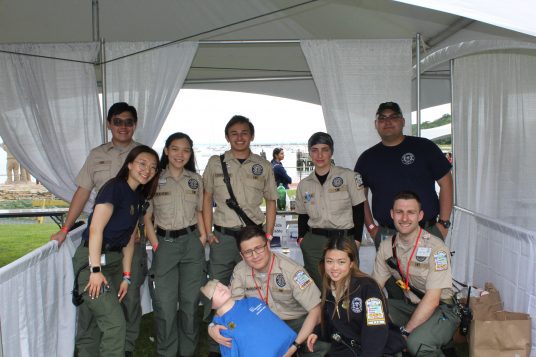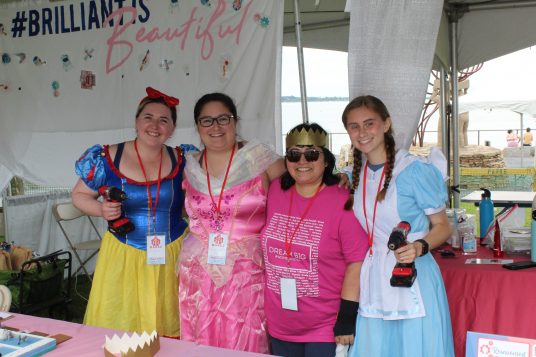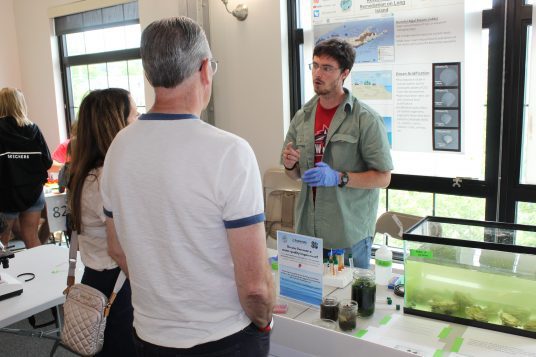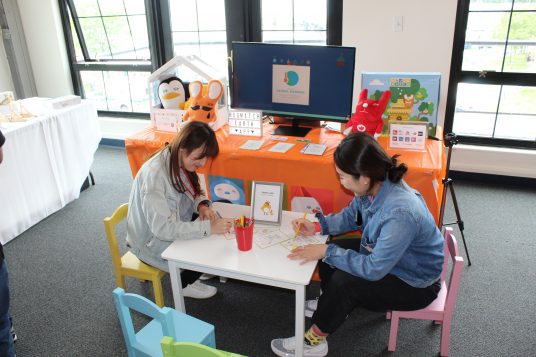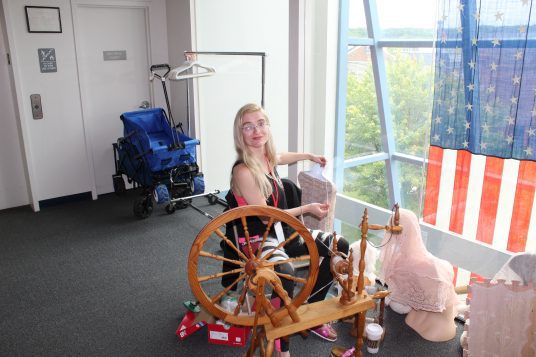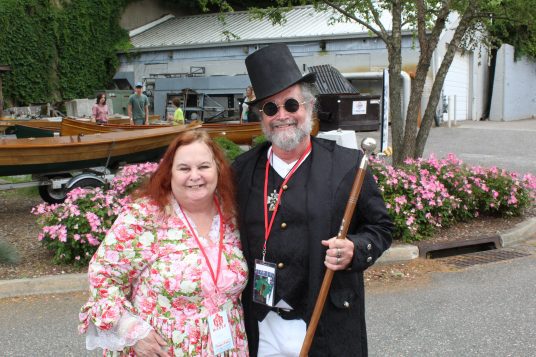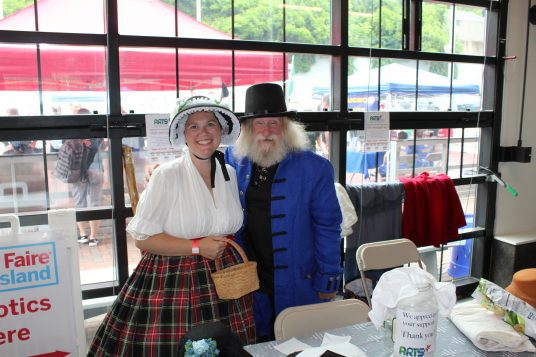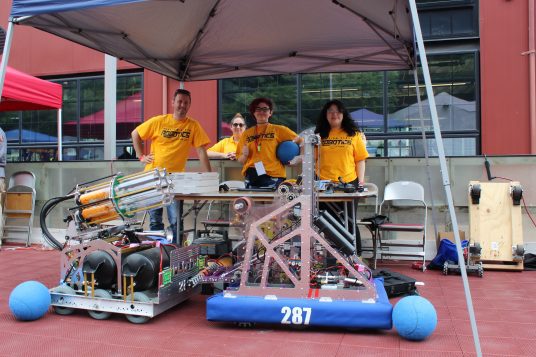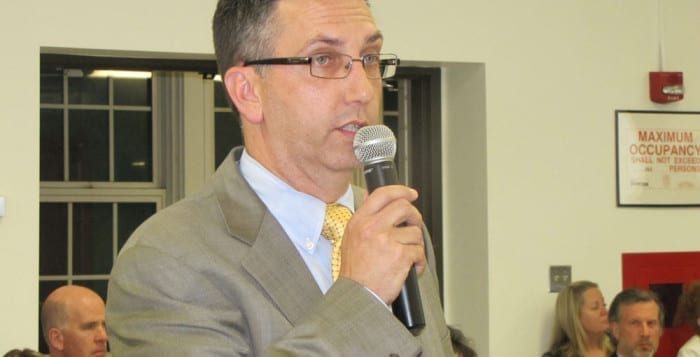By Daniel Dunaief
James “Jim” Harris Simons, the founder of Renaissance Technologies and former Mathematics chair at Stony Brook University whose foundation donated over $6 billion to scientific and other causes, died on May 10 at the age of 86.
Simons, who was born in Brookline, Massachusetts, to Marcia and Matthew Simons, touched the lives of many across Long Island and the world. He shared a dry sense of humor with those fortunate enough to interact with him, compassion with those who, like him, had suffered painful losses and a readiness to contribute personally and financially in a host of settings, including creating the beloved Avalon Preserve in Stony Brook.
Simons developed an early proficiency in mathematics that helped him earn prestigious distinctions and awards and after he left academia, helped him develop an investment approach that enabled him to amass personal wealth estimated at over $31 billion. Simons, whose cause of death wasn’t released, was the 55th richest person in the world, according to Forbes.
In 1994, Simons co-founded the Simons Foundation with his wife Marilyn. He provided much more than financial support to numerous efforts around the world, including to local institutions such as Stony Brook University, Cold Spring Harbor Laboratory and Brookhaven National Laboratory.
Indeed, last year, the Simons Foundation gave a $500 million unrestricted gift to Stony Brook University, which is the largest-ever unrestricted gift to a public institution and over the course of seven years, will more than double the endowment for the school.
“Our university is infinitely better because of [Simons], and his passing leaves an enormous hole in the hearts of all who were fortunate to know him,” Maurie McInnis, president of Stony Brook University wrote in a letter to the campus community.
Simons served on the boards of institutions like BNL and SBU, offering well-received advice to leaders of these institutions and to the scientists conducting the kind of work that could one day help combat diseases and improve the quality of quantity of life for future generations.
“He really applied his talents toward trying to better [Cold Spring Harbor Laboratory] and to other area institutions,” said David Tuveson, director of the Cold Spring Harbor Laboratory Cancer Center.
In addition to funding a range of scientific research, the Simons Foundation also supported research into autism. The Simons’ daughter Audrey was diagnosed with autism when she was 6 years old.
The Simons Foundation committed over $725 million to support autism research for more than 700 investigators in the United States and around the world, according to the Simons Foundation.
Simons was “the largest private funder of autism research in the world,” Matthew Lerner, formerly an SBU research associate professor and now an associate professor and life course outcomes program leader at A.J. Drexel Autism Institute, explained in an email. Lerner added that the “impact of his loss will be enormous.”
‘Smartest and richest guy in the room’
When Simons was part of the board at Brookhaven National Laboratory, he offered insights that benefited the institution and the talented researchers who came from all over the world to contribute.
“He always had hard questions,” said Sam Aronson, the lab director of BNL from 2006 to 2012. “That was really stimulating and scary at the same time, talking to the smartest and richest guy in the room.”
Aronson recalled that Simons never needed a cheat sheet from the staff to know what to ask people giving reports when Brookhaven Science Associates, which is a combination of members from Stony Brook University and Battelle and oversees BNL, met to discuss strategy and science.
During fiscal year 2006, a reduction in funding for the nuclear physics program meant that BNL would likely have to cut staff. Simons stepped in to contribute and help raise $13 million to ensure the continued operation of the Relativistic Heavy Ion Collider, or RHIC.
“That was showing evidence that the board who knew what we were doing scientifically really cared about us getting it done and were not looking for someone to fire,” said Aronson, who became director at BNL just after Simons helped spearhead the financial support.
In addition, Simons, who was committed to educating students in the fields of science, technology, engineering and math, took time to speak with students about his life experience and these fields.
Doon Gibbs, who retired as lab director at BNL last year, recalled coming to the facility early on a Saturday morning with one of his sons.
Simons was at the lab early on a Saturday morning, telling these students to follow their interests and to rely on their own judgment and decision-making and interests, rather than what other people advised or told them to do.
“That demonstrates the commitment he had personally” to education and to inspiring students, Gibbs said.
Simons inspired leaders at the top of their fields, offering inspiration and encouragement.
Stony Brook “went from the concept of being a great math and physics center to being a great university and [Simons] was all on board for that,” said Shirley Kenny, who was SBU president from 1994 to 2009. “There’s no question that I could dream bigger for Stony Brook because of [Simons].”
The geometric path
A gifted math student who first attended Brookline High School in Massachusetts and then moved to Newton High School, Simons earned his bachelor’s degree in three years from the Massachusetts Institute of Technology in 1958.
After he graduated, Simons and friends from Colombia decided to ride motor scooters from Boston to Buenos Aires. At the time, he didn’t own a motor scooter and had never ridden one.
After seven weeks, he and his friends got as far as Bogotá, the capital of Colombia. Recalling the harrowing trip, Simons had said he came perilously close to death and was sure his mother wouldn’t have allowed him to take such a trip had she known of the risks.
After his motor scooter adventure, Simons chose to attend the University of California at Berkeley because he wanted to work with Shiing-Shen Chern. When he arrived at Berkeley, Simons, who hadn’t met Chern at that point, was disappointed to learn that the Berkeley professor was on sabbatical for the year.
While Chern didn’t serve as thesis adviser for Simons, the two mathematicians did work together, producing the Chern-Simons theory, which has applications in math and physics.
After earning his doctorate, Simons, who regularly smoked cigarettes and preferred to wear loafers without socks, split his time between lecturing at MIT and Harvard and working at the Institute for Defense Analysis in Princeton, where he served as a code breaker for the National Security Agency.
Publicly expressing opposition to the war in Vietnam cost him his job at the IDA.
In 1968, Simons, who was married to Barbara Bluestein, made the fateful decision to join the then 11-year-old Stony Brook University, enticed by President John Toll to become the chairman of the Math Department.
Irwin Kra, who joined the Math Department at Stony Brook the same year as Simons, suggested the two mathematicians became “good friends immediately.”
Building on a passion that Simons would share with friends and colleagues throughout his life, Simons and Kra shared time on a small boat that Kra described as a “putt-putt.” The motor on the boat regularly broke and Kra’s job was to hand Simons tools while he went under the engine trying to repair it, which he successfully did many times.
Kra and Simons, who are both Jewish, got into trouble with Irwin Kra’s wife Eleanor when they brought lobsters to a lake the night before Yom Kippur, which is the holiest day of the year in the Jewish religion and does not typically involve consuming shellfish prior to the Day of Atonement.
As a mathematician, Simons won the American Mathematical Society Veblen Prize in Geometry in 1976, which Kra described as a “very distinguished award in differential geometry — he attacked extremely difficult problems.”
In 1974, Simons and his wife Barbara, who had three children, Elizabeth “Liz,” Nathaniel and Paul, divorced.
Simons married Marilyn Hawrys in 1977. Jim and Marilyn Simons had two children, Nicholas and Audrey.
Birth of Renaissance
In 1978, Simons left the Math Department at Stony Brook to start a company that would later become Renaissance Technologies.
Recruiting mathematicians rather than typical stock pickers or money managers, Simons, who was well ahead of his time in his approach to the market, wanted to develop computer programs that would analyze the markets, deciding when to buy and sell commodities, at first, and then stocks.
The so-called quant funds used the early equivalent of artificial intelligence to find trends in the way the investments they bought and sold — sometimes within a single day — moved, profiting from gains that didn’t rely on typical fundamental Wall Street research.
Over time, Renaissance Technologies’ Medallion Fund established a spectacular track record, with annualized returns of 66% before fees and 39% afterward from 1988 to 2018, according to Gregory Zuckerman, author of “The Man Who Solved the Market,” a biography of Simons.
Simons retired from Renaissance in late 2009, with an estimated net worth of over $11 billion.
Empathetic friend
Simons, who lost his son Paul at the age of 34 from a bike accident in 1996 and his son Nicholas in 2003 when he drowned off Indonesia, gave from his wallet, his intellect and his heart.
In the late 1990s, when Shirley and Robert Kenny were managing through the difficulties of leukemia treatments for their son Joel, Simon sent them on a trip to the Caribbean aboard his yacht.
The boat took them to St. John’s, St. Croix and other islands, providing them with a “wonderful vacation,” Shirley Kenny said. “It was just heavenly. It was a very, very happy memory. We had this joyous time before we had this terrible time and that’s thanks to [Simons.]”
Simons was also known to connect with the families of friends who were experiencing medical challenges or coping with grief.
After his son Paul died, Simons was searching for a way to memorialize him. He reached out to The Ward Melville Heritage Organization to purchase land in Stony Brook. Gloria Rocchio, president of the WMHO, took Simons on a tour of the property that would become the first parcel of land for Avalon Preserve. Simon stood on top of the hill and said, “This is it,” Rocchio recalled, leading to the first land purchase of the Avalon Preserve.
Since then, Simons has added to the preserve, which now includes about 216 acres of property.
Up until this year, Simons remained involved in the preserve, as he wanted to build a tunnel so people wouldn’t have to walk on the road to go from one piece of property to another.
That tunnel, which took years of planning, will be completed in August.
In describing the growth of the preserve, Rocchio recalled how Avalon had added 15 acres, which included a run-down house the donor stipulated couldn’t change.
One day, the trustees arrived and walked through a plastic curtain in the house and discovered the rest of the house was missing.
Simons explained that there were too many termites and the house had to come down.
“That was [Simons],” Rocchio said. “He found out the house was structurally not able to be saved.”
Suffolk County Legislator Steve Englebright (D-Setauket) recalled how important it was to protect that land.
“I have seen most of the nature preserves around the state,” Englebright said. Avalon is not only the “finest in the entire state” but one of the “best I have ever seen anywhere.”
While Avalon is a memorial to Simons’ son Paul, it’s also “a memorial” to Simons, Englebright added.By remaining undeveloped and continuing to protect the old growth forest, the Avalon Preserve prevents the water of Stony Brook Harbor from the kind of pollution that runoff from developed property might otherwise carry.
Simons “turned a terrible tragedy into a living legacy,” Englebright said.
Simons also honored his son Nicholas, creating the Nick Simons Institute in 2006. The institute provides training, support to district hospitals and advocacy for rural health workers in Nepal.
Jim and Marilyn Simons visited Nepal regularly, traveling to remote parts of the country and visiting eight hospitals that would become a part of the Nick Simons Institute.
A humble legacy
Despite the many ways Jim and Marilyn Simons, who earned her bachelor’s degree and her doctorate in economics at Stony Brook University, contributed to science and to the area, they remained humble and accessible.
Aronson suggested to Simons that he wanted to honor him personally for his timely and important contributions to the RHIC at BNL.
When Simons declined, Aronson asked if he could name one of the roads on-site after Renaissance, which Simons approved.
On one of the Stony Brook buildings that bears their name, the Simons Center for Geometry and Physics, Simons focused on the student and faculty experience. He wanted to make sure people in the building had a place to eat and didn’t have to trek to the dining hall.
“He wanted a good restaurant there,” recalled Kenny.
Apart from ensuring the building served food, Simons found a problem he wanted to fix. At the opening of the center, he noticed that the elevators were too slow, so he hired the person who built the center to create a separate, faster elevator which was attached to the building after it was completed.
Still contributing
Despite stepping away from the world of academia to become one of the most successful fund managers in history, exceeding the returns of titans like Warren Buffett, Simons still found time to contribute to the world of math.
Bruce Stillman, CEO of Cold Spring Harbor Laboratory, visited Simons’ office about six years ago. Stillman noticed a copy of a geometry journal on the coffee table and expressed his surprise that Simons was still reading math literature.
“What do you mean reading?” Simons replied, according to Stillman. He told the CSHL leader to open to a particular page, where he had co-authored an article.
“He was still publishing mathematics after being an extremely successful hedge fund manager,” said Stillman, who added that Simons was the largest contributor to CSHL. “He kept a lot of balls juggling in the air.”
Several people shared their appreciation for the opportunity to share relaxing and meaningful time aboard the various boats Simons owned over the years, including the 222-foot yacht called Archimedes.
Aronson took a trip around the harbor aboard the Archimedes soon after Simons had purchased it, describing the ride as akin to a “floating cocktail party.”
While on board, Aronson met famed Kenyan anthropologist and conservationist Richard Leakey. Aronson wound up going on a number of trips to Kenya to work on ways to apply green energy.
As for Kra, he recalled a time when he was supposed to take a trip aboard Simons’ boat. One of the engines broke and Kra suggested he postpone the journey.
Simons refused to cancel and suggested the boat would come in slowly to Miami and would travel slowly to the Caribbean, navigating in calmer, shallower waters, which it did.
Numerous people shared their admiration for a man who contributed and continues to contribute to the lives of educators and students.
Famed actor Alan Alda benefited from his interactions with Simons. He was “a huge force in so many people’s lives, including mine,” Alda wrote in an email. He was “as generous as he was smart. And he was scarily smart.”
With the help of the Simons, Alda helped found the eponymous journalism school at Stony Brook.
“I’ll always be grateful for his and his wife Marilyn’s contributions to the Alda Center for Communicating Science at Stony Brook,” and of course, he will have touched countless lives through his landmark gifts to Stony Brook University, Alda added. “He certainly put his love of knowledge to good use.”
Simons is survived by his wife, three children, five grandchildren, and a great grandchild.
Stony Brook University plans to celebrate Simons’s impact in the coming months.


